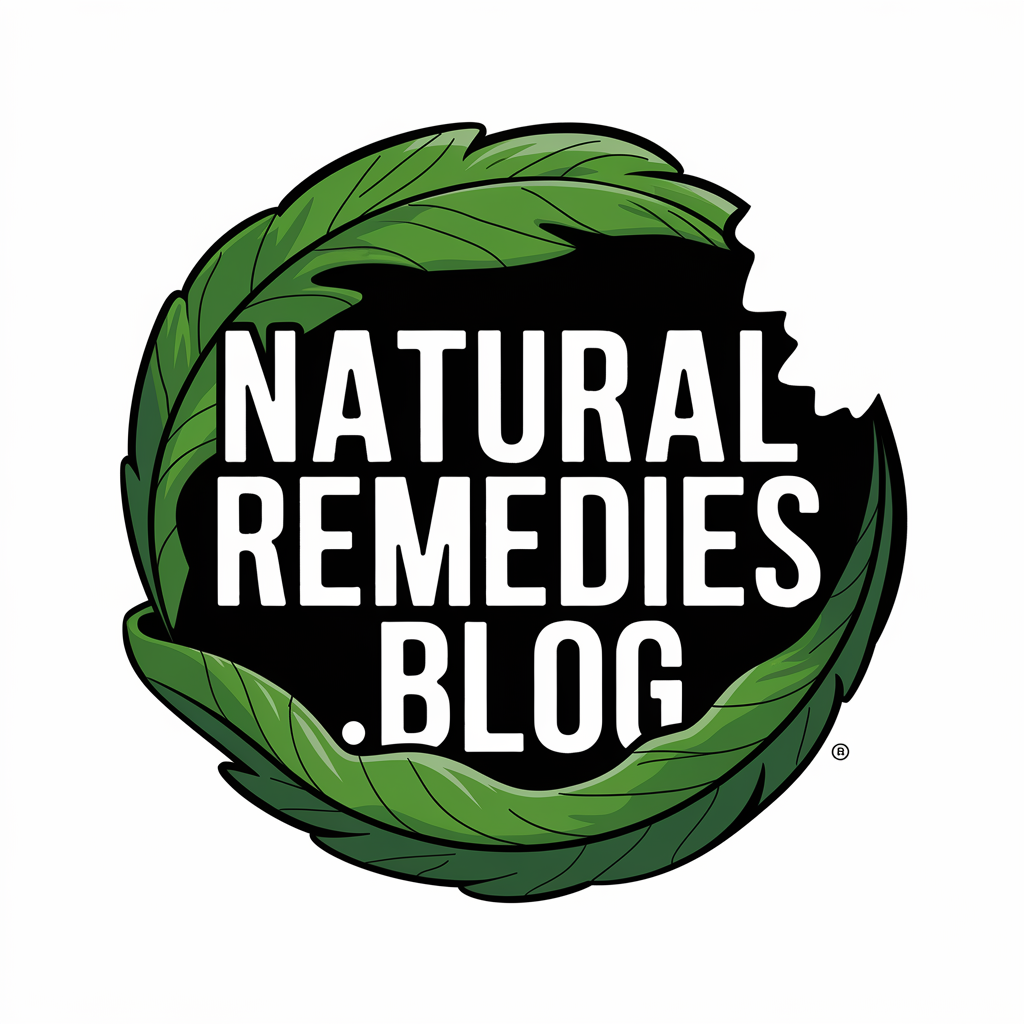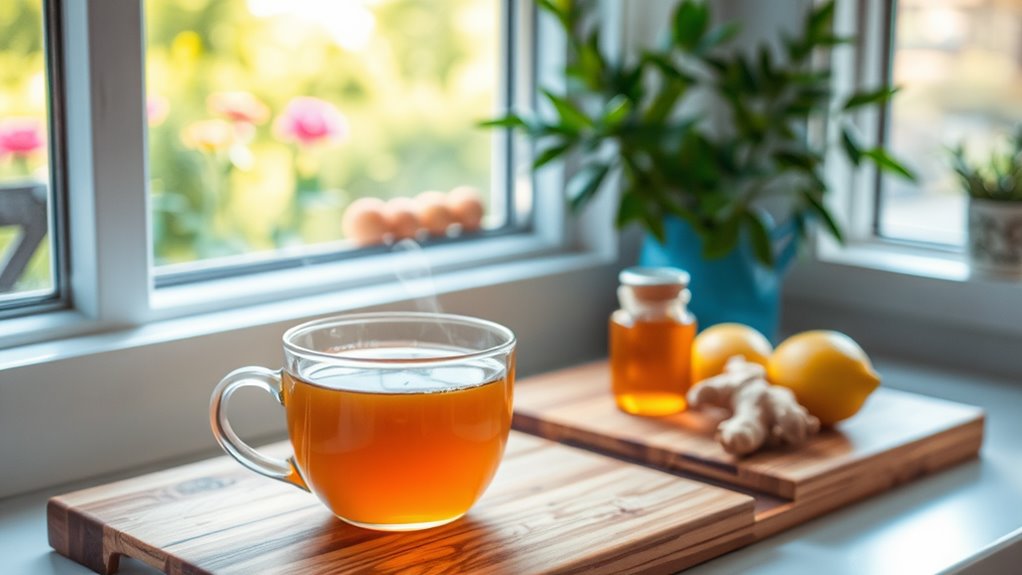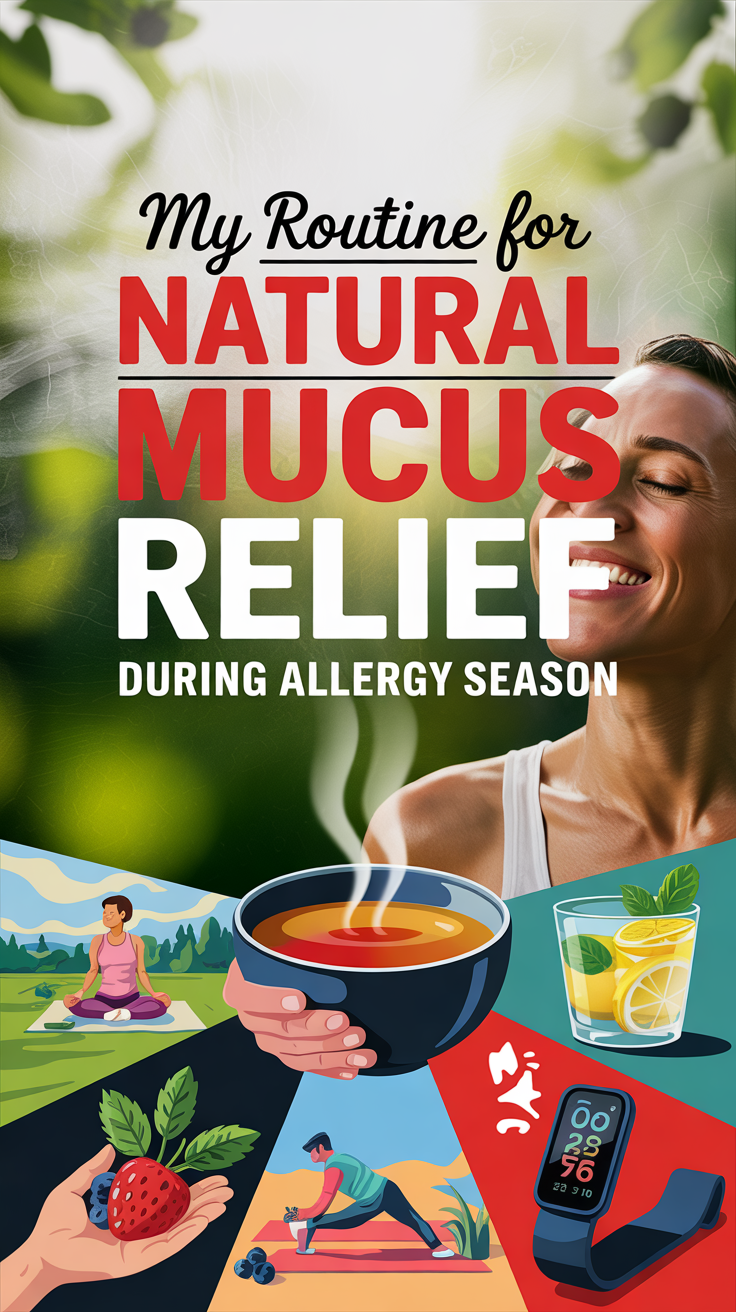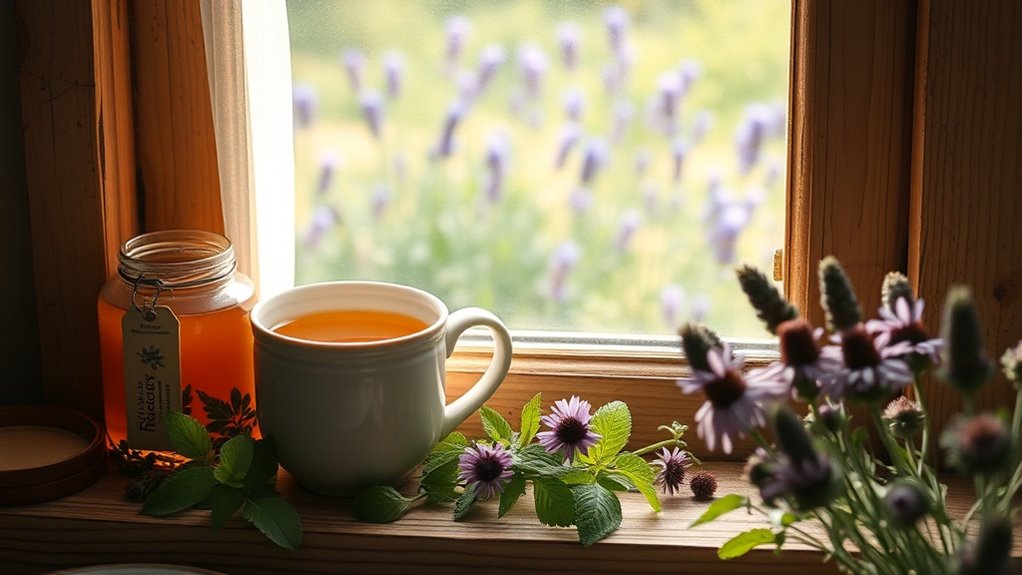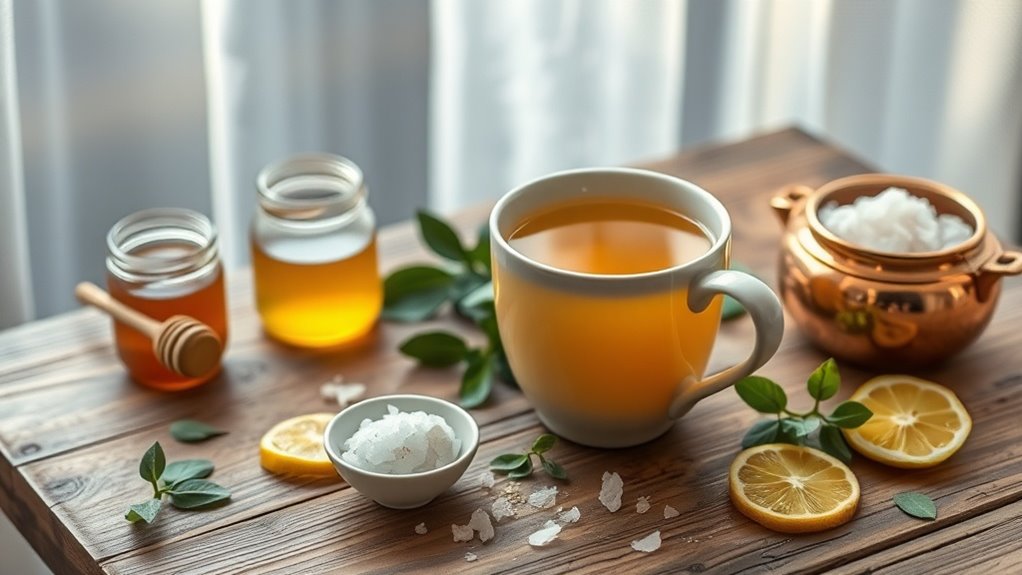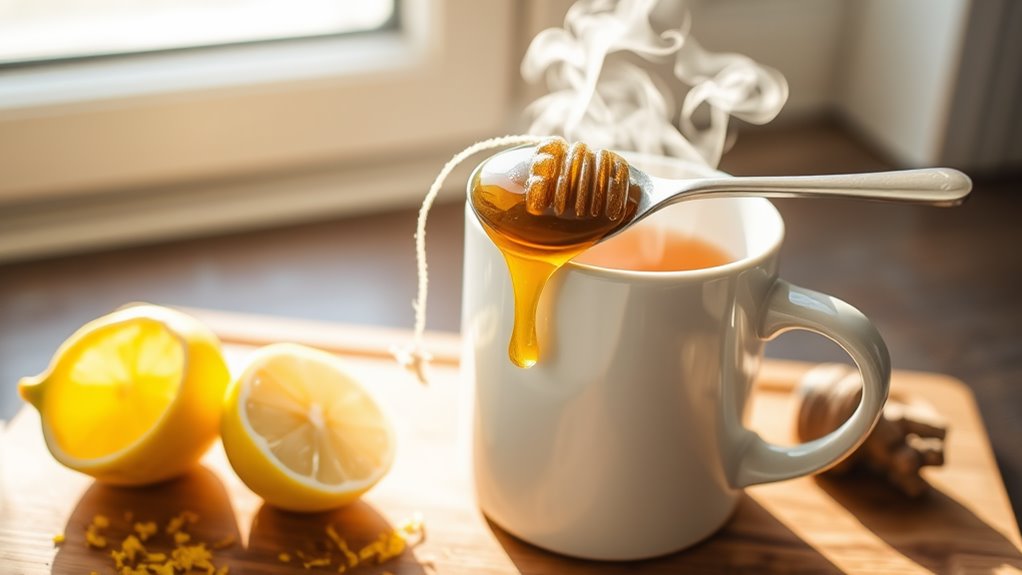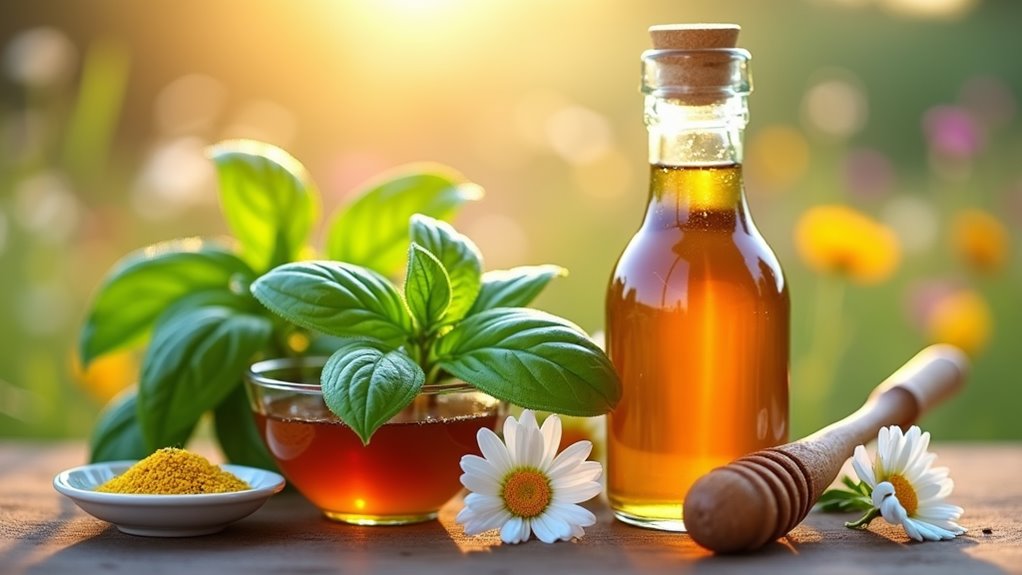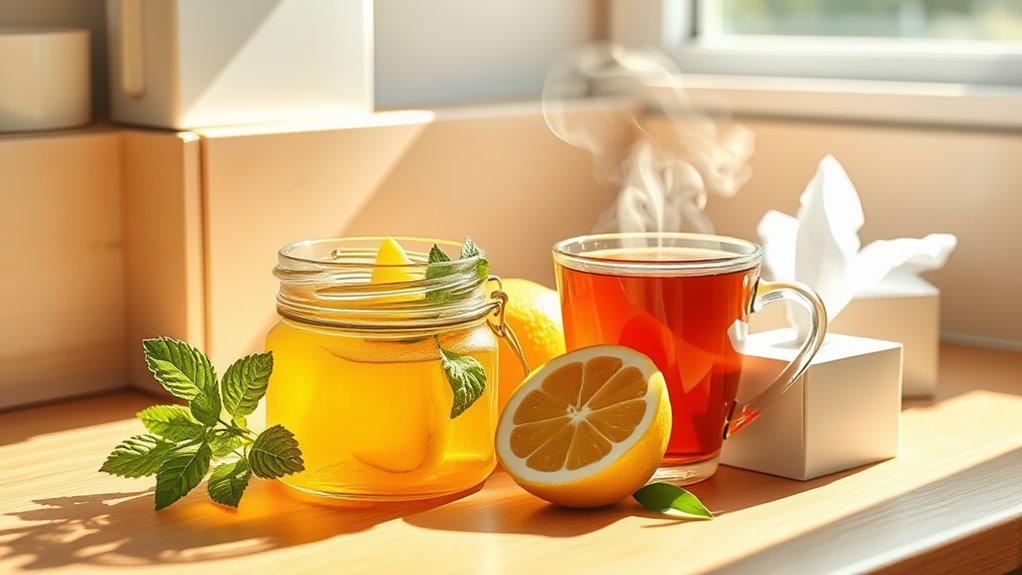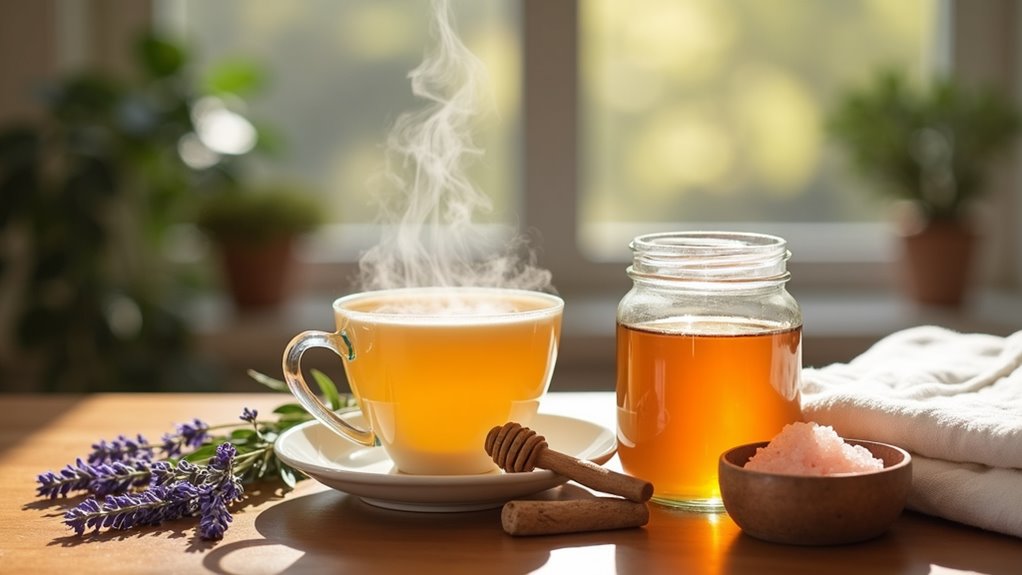My Routine for Natural Mucus Relief During Allergy Season
To naturally relieve mucus during allergy season, ensure you stay hydrated by drinking plenty of fluids. Incorporate nasal irrigation techniques using squeeze bottles for effective mucus clearance. Utilize essential oils, like eucalyptus and peppermint, for their decongestant properties. Consider quercetin and butterbur to manage histamine responses. Maintain a clean environment to reduce allergens. Exploring acupuncture and moxibustion can also enhance your relief strategies. You’ll find even more valuable tips for optimal results.
Hydration Strategies for Mucus Relief
How can you optimize hydration for effective mucus relief?
Start by ensuring regular fluid intake, as consistent hydration is vital for maintaining mucus consistency. Drinking water thins mucus, making it easier to expel and reducing sinus pressure. This aids liver function, which plays a role in detoxifying allergens and regulating histamines. To complement mucus relief remedies, adjust your diet to include antioxidants and avoid allergens. Heat from drinks soothes sore throat and promotes drainage, enhancing the benefits of hydration. Additionally, staying well-hydrated can be especially beneficial because it helps reduce mucus thickness, allowing for better airflow. Remember, staying well-hydrated not only soothes your throat but also strengthens your immune response, helping you manage allergy symptoms more effectively. Prevent dehydration to avoid exacerbating your discomfort and maintain overall health.
Effective Nasal Irrigation Techniques
Effective nasal irrigation techniques are essential for managing mucus-related conditions and improving overall sinus health.
High-volume, high-pressure irrigators provide superior mucus clearance, especially for rhinosinusitis and allergic rhinitis. Nasal irrigation is a helpful method to flush out pathogens and allergens that contribute to mucus buildup.
The kneeling head-to-floor position maximizes solution distribution. This technique can help reduce nasal inflammation by allowing better access for the irrigation solution.
Daily use can reduce symptom severity by over 60%, with benefits lasting up to three months.
While squeeze bottles offer comfort, devices like RhinoFlow nebulizers balance efficacy and ease. Adhering to a morning or evening routine enhances compliance and optimizes results in symptom relief and overall sinus function.
Essential Oils for Sinus Congestion
When addressing sinus congestion, essential oils can be utilized through various techniques such as diffusion, steam inhalation, and careful dilution for topical application. These methods allow you to harness the potential benefits of oils like eucalyptus and peppermint effectively. Additionally, a 2021 review highlighted the antiviral potential of oils including oregano, eucalyptus, and menthol against respiratory infections. Eucalyptus oil is known for its ability to help open up airways and improve breathing, making it a popular choice for sinus relief. However, it’s important to follow safety guidelines to minimize risks while promoting sinus relief.
Diffusion Techniques
Diffusing essential oils can be an effective method for alleviating sinus congestion. Various diffusion techniques allow you to harness these natural remedies:
| Essential Oil | Benefits |
|---|---|
| Eucalyptus Oil | Clears nasal passages, antimicrobial |
| Peppermint Oil | Acts as a natural decongestant, opens airways |
| Frankincense Oil | Reduces inflammation, eases congestion |
| Tea Tree Oil | Antiseptic properties, fights infections |
| Rosemary Oil | Enhances mental clarity, reduces symptoms |
Using a diffuser or direct inhalation can provide consistent relief. For example, inhaling peppermint oil helps open airways and clear mucus, enhancing its decongestant effects. Remember to follow safety precautions when using essential oils for optimal benefits.
Steam Inhalation Method
Steam inhalation is a highly regarded method for alleviating sinus congestion, often enhanced with essential oils.
To prepare, boil water and pour it into a heat-safe container, adding 1-2 drops of oils like peppermint, eucalyptus, and lemon.
Lean over the container, covering your head with a towel to trap the steam. Inhale deeply for 5-10 minutes, repeating this 2-3 times daily.
This method hydrates membranes to thin mucus, reduces inflammation, and fights bacteria. Additionally, it can help calm coughs and provide respiratory support during allergy season.
Ensure you position your face 8-12 inches above the water and use only organic, therapeutic-grade oils for safety and effectiveness.
Dilution and Application
To effectively use essential oils for sinus congestion, proper dilution and application techniques are crucial.
Dilute essential oils at a safe ratio of 2% for adults, using carrier oils like fractionated coconut or jojoba to minimize irritation.
Avoid applying undiluted oils directly to the skin.
Always conduct a patch test with diluted oil before use.
For children aged six and above, dilute to 0.25-0.5%.
Use methods like facial compresses or sinus massages to apply diluted oils effectively.
Remember to avoid essential oils that may cause respiratory risks, like peppermint, near young children (12 drops per 30 mL carrier oil).
Utilizing Quercetin and Butterbur
Quercetin, a flavonoid rich in antioxidant properties, stabilizes mast cells, preventing histamine release and reducing symptoms like sneezing and congestion. You’ll find it in foods such as apples and onions, or in supplement form for concentrated doses. On the other hand, butterbur, derived from the Petasites hybridus plant, offers anti-inflammatory benefits that may further alleviate allergy symptoms. Together, these compounds may work synergistically, providing a natural and effective approach to managing allergic reactions with fewer side effects compared to conventional medications. Additionally, studies have shown that butterbur is as effective as antihistamines, making it a compelling option for those seeking natural remedies.
Managing Environmental Allergens
Effectively managing environmental allergens is a key component in reducing allergy symptoms, especially during peak seasons.
Begin by using allergen-resistant covers on bedding and washing them weekly in hot water. Opt for low-pile carpets or washable rugs.
Keep windows closed during high pollen seasons and utilize HEPA air purifiers to capture airborne particles.
Maintain humidity below 50% to deter dust mites and mold.
For pet dander control, restrict pets from bedrooms and vacuum their areas daily.
Shower after outdoor activities and monitor pollen counts to minimize exposure. Using a HEPA air purifier can remove 99.9% of airborne particles, significantly improving overall air quality.
Implementing these strategies can significantly lessen allergic reactions and improve overall air quality.
Exploring Acupuncture and Alternative Therapies
Acupuncture techniques play a crucial role in allergy management by targeting specific points to alleviate symptoms and reduce inflammation.
Additionally, moxibustion, a traditional practice involving the burning of mugwort near acupuncture points, can enhance therapeutic effects. Incorporating breathing techniques into your routine can further improve mucus relief and promote easier breathing.
Understanding these methods can help you incorporate effective strategies into your mucus relief routine.
Acupuncture Techniques Explained
Needles serve as the primary tools in acupuncture, a practice rooted in Traditional Chinese Medicine that involves inserting them into specific points on the skin to promote balance and healing.
This technique targets meridian points to help correct Qi imbalances, often enhancing overall well-being.
Acupuncture is primarily used for pain management, addressing musculoskeletal disorders and neurological issues.
The needles may be manually activated or connected to electrical devices for enhanced stimulation.
Other specialized techniques, like auricular or scalp acupuncture, focus on specific areas, expanding the therapeutic applications.
Studies indicate acupuncture’s effectiveness, especially for managing chronic pain and improving health outcomes.
Moxibustion Benefits Included
Moxibustion complements acupuncture by utilizing the therapeutic properties of mugwort, which is burned near specific acupuncture points.
This traditional Chinese medicine therapy regulates immune system balance, providing anti-allergy effects.
By reducing symptoms such as nasal congestion and sneezing, moxibustion effectively enhances quality of life.
Research indicates it outperforms conventional medications like Loratadine, with sustained benefits observed in long-term follow-ups.
Its minimal adverse reactions make it a safe alternative for those sensitive to pharmaceuticals.
Given its accessibility and cost-effectiveness, you might find moxibustion a valuable adjunctive therapy, particularly when other treatments fail.
